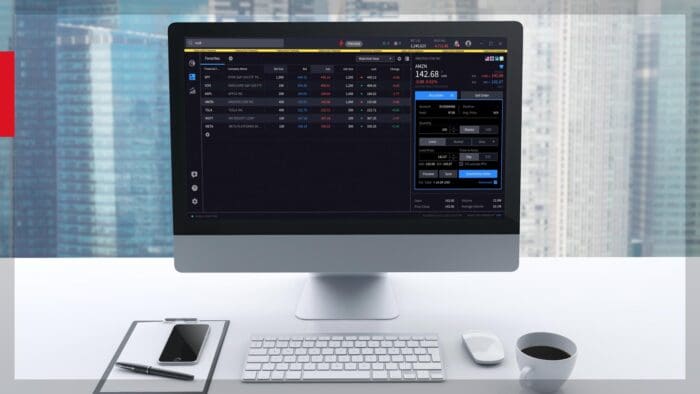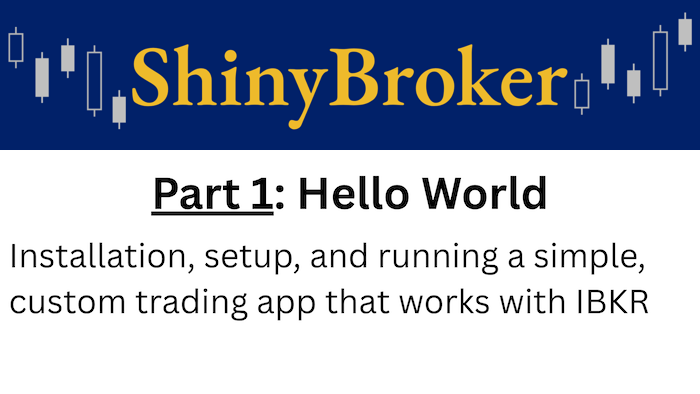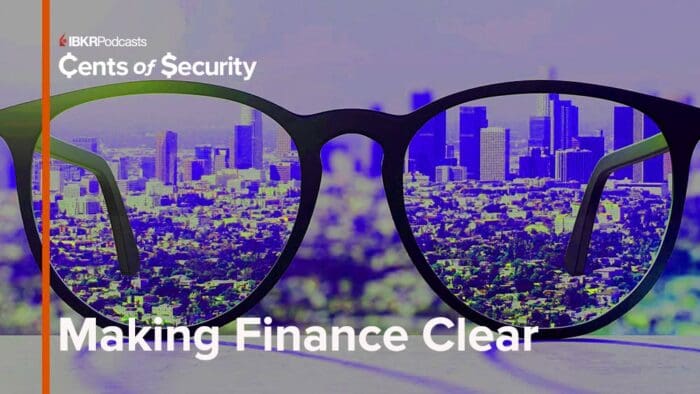Prediction markets have long been recognized for their ability to provide information by aggregating and representing the collective “wisdom of the crowd,” where the crowd is typically represented by speculators seeking to profit from their own unique insight. However, prediction markets also have other, less discussed applications that can be more directly practical to those participating in the markets. One of the clearest examples of this is the hedging of financial risk to weather or natural disasters, akin to disaster insurance contracts.
How an organization can utilize a Forecast Contract in a manner similar to a disaster insurance contract.
ForecastEx offers various prediction markets for natural disasters at a local level, such as, for instance, “Will a major hurricane make landfall in Miami-Dade County in 2025?” Numerous organizations might face broad exposure to such an outcome that they may wish to insure against. These include utility companies, commercial and residential real estate owners, businesses with many franchises in the area, theme parks, municipalities, and insurers and reinsurers themselves.
For these organisations, buying a large number of YES contracts on a disaster strike like this would mean a large payout immediately after the event occurs. This would be very similar to purchasing “parametric insurance,” which is triggered by weather parameters like recorded wind speed, as opposed to the more familiar “indemnity” insurance that covers direct, demonstrable financial losses.
Let’s consider a simplified example. Imagine that the true probability of a major hurricane making landfall in a given county this year is 10%, and thus the price of the initial YES contract is listed at $0.10. Now, let’s suppose an organization with exposure to that event wants $10 million in coverage, should it occur. Buying a YES for $0.10 would payout $1.00 for a net of $0.90 per contract, so in order to get a $10 million net payout if the event occurs, the organization would have to buy a little over 11 million YESs for a little over $1.1 million.
If the hurricane occurs, they net $10 million, and if it does not, their YESs are worth $0.00, so they lose $1.1 million. This is roughly analogous to an insurance arrangement where the organization pays a $1.1 million premium for $10 million in coverage, although the full premium is paid upfront.
For simplicity, this example ignores two additional attributes that would slightly alter the numbers, one to the participant’s disadvantage and one to their advantage. The slight disadvantage is that ForecastEx charges a fee of one cent for each pair of YES and NO contracts. The advantage is that ForecastEx invests the collateral and passes 100% of the earnings back to its members each month, which can be used as an incentive coupon. Currently, Interactive Brokers offers an incentive coupon at a 3.83% annualized rate, which accrues daily based on the dynamic market price of the contract and is paid monthly.
Shared advantages between Forecast Contracts and other parametric insurance
Forecast Contracts share many of the advantages that parametric insurance offers over indemnity insurance.
These advantages include fast, automatic payouts that occur almost immediately after an event takes place. Indemnity insurance involves claims paperwork and loss-adjustment that can be negotiated, which can delay payouts for months or even years after the event occurs. This is especially true after a major disaster, when claims adjusters are overwhelmed. In contrast, parametric triggers are designed to be straightforward, eliminating dispute risk and ensuring that payouts occur within days. There are also no deductibles (the amount a policyholder must pay before coverage begins) or limits/sub-limits (the maximum amount covered for a specific type of loss within a broader policy).
Another advantage of parametric insurance is that it entails broad coverage with no strings attached. The money can, of course, be used for anything the organization deems appropriate. Thus, it can cover less tangible risks that are not easily quantifiable, such as general business interruption, supply chain disruption, lost tourism revenue, decreased property values, or lost tax base (for public entities). This aspect is especially applicable to variables like warm winter temperatures or low wind speeds, which might negatively affect, for example, energy companies, but do not cause physical damage.
These aspects of speed and flexibility may be especially appealing for public entities, such as municipalities, which can allocate funds for immediate disaster relief efforts in any way they deem necessary. It would also eliminate concerns about relying on political systems, such as the federal government’s declaration of an emergency to mobilize resources.
Shared disadvantages between Forecast Contracts and other parametric insurance.
The main disadvantage of parametric insurance is referred to as basis risk. This is the mismatch between the payout based on the weather parameters and the actual financial losses incurred by the organization. For instance, if a storm strikes just outside the defined region or falls slightly below the strength threshold, the contract may fail to trigger even if the buyer suffers some losses. But basis risk cuts both ways. So an organization could emerge relatively unscathed from a disaster that triggers the YES, yet still receive the full YES value.
While basis risk is a concern, it is a lesser issue for entities with broad exposure across a region, such as local governments, insurers, reinsurers, or utility companies. For these users, contracts can still provide meaningful protection against systemic or regional weather events. Nevertheless, due to basis risk, entities generally consider parametric insurance as a complement to other forms of insurance that are indemnity-based rather than a replacement. Forecast Contracts should probably be viewed the same way.
Advantages of Forecast Contracts over traditional parametric insurance
There are also several advantages of Forecast Contracts over traditional parametric insurance.
One advantage is that they are fully collateralized by the exchange, which eliminates default risk. Catastrophe Bonds share this quality.
Another advantage is that their structure is extremely transparent and straightforward. The price of a YES directly reflects the implied probability of the event occurring, making the price intuitive and the probability easy to compare against third-party estimates. If an organization likes the price, they can buy as many as they want (granular customization). If they decide they want to realize gains or cut losses, they can easily close out at any time. Along those lines, assuming a high-participation, liquid market, Forecast Contracts can be easily bought in real time as odds change, for example, even after a hurricane has formed off the coast.
Perhaps the greatest advantage of Forecast Contracts over traditional parametric insurance is that no insurance company is involved at all. In this environment, the cost of YES contracts is determined by the real-time probability of the event occurring as perceived by the market. This means that if the market is efficient, there would be zero expected loss. In other words, the buyer pays close to fair odds for the coverage they seek and does not need to cover the insurers’ profit margins and administrative overhead. Compared to Cat Bonds, there is no overhead related to creating and issuing the bond or establishing a Special Purpose Vehicle.
In a similar vein, since Forecast Contracts are not legally classified as insurance contracts, government insurance price controls do not apply. This means that governments can’t force premiums below actuarial levels, which has driven insurers out of markets like Florida and California. Relatedly, Forecast Contracts could serve as an alternative form of insurance for those whose coverage has been canceled or who are unable to obtain traditional insurance.
Disadvantages of Forecast Contracts compared to traditional parametric insurance
Forecast Contracts have some drawbacks when compared to traditional parametric insurance.
One is that the full cost of the insurance must be paid upfront, which could make it prohibitively expensive for some organizations.
Another disadvantage is that since they are not legally recognized as insurance, they do not meet the legal insurance requirements necessary for participating in certain activities, such as obtaining a loan or receiving a certain credit risk rating.
A third disadvantage is that because they depend on markets pairing YES and NO bids, they won’t work unless there are individuals and organizations interested in purchasing the NO side of a disaster strike and effectively acting as the counterparty willing to assume the risk of the hedger.
Those interested in buying NOs on Disasters
First, it’s important to point out that NOs could also be viewed as revenue downside insurance. This applies to organizations that provide services during disasters, such as retailers like Home Depot or Lowe’s; roofing, siding, and window contractors; or restoration and remediation contractors dealing with water damage, mold cleanup, or debris removal.
However, more generally, the buyers of NOs would include anyone interested in receiving the risk premium offered by those purchasing the YESs.
In our previous example (where the hurricane landfall’s true probability is 10%), let’s say there are YES bids for $0.20 because organizations are willing to pay a premium to transfer the risk off their books, which, of course, they are, or insurance would not exist.
Essentially, those looking to hedge risk would bid YES prices up, pushing them higher than their true probability, which inherently means that NOs become undervalued or go on sale. In our example, someone could purchase a NO at $0.80 when its true value is $0.90. This means that, on average, that person would receive $0.90 on that $0.80 investment per contract. The $0.90/$0.80 represents a 12.5% return in a very short time (someone could buy a NO in June, and the expiration is at the end of December).
This strategy can also be scaled. Purchasing a suite of undervalued NOs that are uncorrelated with each other provides a way to achieve high returns that are likewise uncorrelated with mainstream equities or bonds (hurricane occurrence is unrelated to the business cycle). Therefore, acquiring undervalued NOs could be regarded as an asset class that diminishes the volatility and downside risk of a broader portfolio.
Historically, hedge funds, pension funds, sovereign wealth funds, and even university endowments have invested in Catastrophe Bonds due to the same attributes. Finally, “impact-driven investors” like ESG-oriented or climate-resilience funds can argue that investing in NOs provides the capital that facilitates climate resilience while still delivering a good return.
These institutional investors could buy Forecast Contract NOs, but Interactive Brokers allows access to retail investors as well, allowing anyone to receive the risk premiums for taking on fractional exposure to disaster risk.
Is there enough liquidity to use Forecast Contracts in this Way?
These markets require broad participation to function effectively for this purpose. That’s why Interactive Brokers is working to raise awareness about the utility of Forecast Contracts for this purpose. In the meantime, there is a first-mover advantage, as newly emerging markets with low participation are more likely to be mispriced, presenting greater opportunities to capitalize on these mispricings and generate profits early on. Ultimately, if enough people become aware of the disaster insurance applications of Forecast Contracts, market liquidity is likely to increase rapidly.
Disclosure: Interactive Brokers
The analysis in this material is provided for information only and is not and should not be construed as an offer to sell or the solicitation of an offer to buy any security. To the extent that this material discusses general market activity, industry or sector trends or other broad-based economic or political conditions, it should not be construed as research or investment advice. To the extent that it includes references to specific securities, commodities, currencies, or other instruments, those references do not constitute a recommendation by IBKR to buy, sell or hold such investments. This material does not and is not intended to take into account the particular financial conditions, investment objectives or requirements of individual customers. Before acting on this material, you should consider whether it is suitable for your particular circumstances and, as necessary, seek professional advice.
The views and opinions expressed herein are those of the author and do not necessarily reflect the views of Interactive Brokers, its affiliates, or its employees.
Disclosure: ForecastEx
Interactive Brokers LLC is a CFTC-registered Futures Commission Merchant and a clearing member and affiliate of ForecastEx LLC (“ForecastEx”). ForecastEx is a CFTC-registered Designated Contract Market and Derivatives Clearing Organization. Interactive Brokers LLC provides access to ForecastEx forecast contracts for eligible customers. Interactive Brokers LLC does not make recommendations with respect to any products available on its platform, including those offered by ForecastEx.
Disclosure: Forecast Contracts
Forecast Contracts are only available to eligible clients of Interactive Brokers LLC, Interactive Brokers Canada Inc., Interactive Brokers Hong Kong Limited, Interactive Brokers Ireland Limited and Interactive Brokers Singapore Pte. Ltd.
Disclosure: ForecastEx Market Sentiment
Displayed outcome information is based on current market sentiment from ForecastEx LLC, an affiliate of IB LLC. Current market sentiment for contracts may be viewed at ForecastEx at https://forecasttrader.interactivebrokers.com/en/home.php. Note: Real-time market sentiment updates are only active during exchange open trading hours. Updates to current market sentiment for overnight activity will be reflected at the open on the next trading day. This information is not intended by IBKR as an opinion or likelihood of a potential outcome.
Disclosure: Forecast Contracts Risk
Futures, event contracts and forecast contracts are not suitable for all investors. Before trading these products, please read the CFTC Risk Disclosure. For a copy visit our Warnings and Disclosures Page.
Disclosure: CFTC Regulation 1.71
This is commentary on economic, political and/or market conditions within the meaning of CFTC Regulation 1.71, and is not meant provide sufficient information upon which to base a decision to enter into a derivatives transaction.


















Join The Conversation
For specific platform feedback and suggestions, please submit it directly to our team using these instructions.
If you have an account-specific question or concern, please reach out to Client Services.
We encourage you to look through our FAQs before posting. Your question may already be covered!